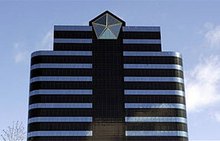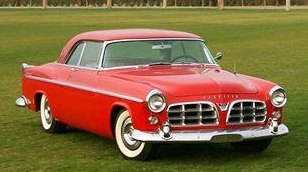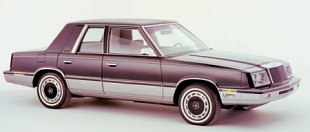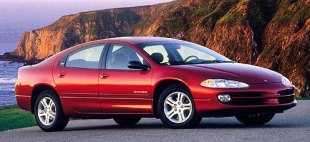
| FCA (FIAT) |
Various plants in the US, Canada and Mexico.

2016: est. 2,900,000 units*
2015: est. 2,800,000 units*
2014: est. 2,600,000 units*
2013: 2,400,000 units (excluding cars supplied to Fiat)
2012: 2,200,000 units
2011: 1,900,000 units
2010: 1,516,000 units
2009: 1,317,623 units (outside North America: 140,786 units)
2008: 2,010,800 units
2007: 2,676,268 units
2006: 2,698,429 units
2005: 2,812,993 units
2004: 2,779,895 units
2017 global sales by brand:
Jeep: 1,388,208 units
Dodge: est. 530,000 units*
Chrysler: est. 210,000 units*
Ram: est. 670,000 units*
2017 US sales by brand:
Dodge: 446,996 units
Chrysler: 188,545 units
Jeep: 828,522 units
Ram: 556,790 units
Total: 2,020,853 units
2017 US sales by model:
Dart: 10,082 units
200: 18,457 units
Charger: 88,351 units
300: 51,237 units
Challenger: 64,537 units
Viper: 585 units
Town & Country / Caravan: 125,773 units
Pacifica: 118,274 units
Renegade: 103,434 units
Journey: 89,470 units
Compass / Patriot: 123,988 units
Wrangler: 190,522 units
Cherokee: 169,882 units
Grand Cherokee: 240,696 units
Durango: 68,761 units
Ram pickup: 500,723 units
* Following the merger, FCA no longer reports global sales figures for its American brands.
Reference:
http://www.fcagroup.com/en-US/media_center/fca_press_release/Pages/home.aspx
Now being part of the FIAT group, its product portfolio is set to change significantly, emphasizing on small cars shared with FIAT.
By 1929, Chrysler became the third largest car maker in the USA, just behind GM and Ford. From 1936-49 it even overtook Ford to the second place. During WWII, Chrysler's factories were converted into arsenals and responsible for producing M4 Sherman tanks. It continued earning good profit during the Korean War in 1950s.
In order to challenge its rivals, Chrysler followed them to inroduce multiple brands and a cascading pricing policy. Its brands included Plymouth and DeSoto (both created in 1928), Dodge (acquired from Dodge Brothers automobiles in 1928), Imperial (1955) and Valiant (1960). In 1987 it acquired AMC (American Motors Corporation), hence secured the Jeep brand. However, most of these brands were abandoned afterwards as sales declined. By the new millenium, only Chrysler, Dodge and Jeep are left.
 1955 Chrysler 300
1955 Chrysler 300In the 1950s and 60s, Chrysler was famous for producing a series of performance cars, such as the 300-series with hemi-spherical combustion chamber V8 and the Dodge Charger musclecar. Nevertheless, the musclecar era ended in tragedy when the first energy crisis and Federal emission regulations arrived. Chrysler found itself failed to sell its thirsty large cars and lost its market share to Japenese econo cars. On the other hand, its ambitious expansion plan in Europe came to a failure, too. As a result, by the late 1970s it ran to the edge of bankruptcy.
Fortunately, in 1978 the company hired Lee Iacocca from Ford as its new president. He introduced a radical cost reduction program, cutting heads, axing unpopular models and reducing platforms - eventually to only one ! As a result, Chrysler lost weight by 50%. Meanwhile, Iacocca sought a US$1.5 billion loan from the Federal government and used it to develop the one and only one platform - the front-wheel-drive K-cars, which formed the basis of many models. The K-cars were small cars compare with GM and Ford’s models. They helped Chrysler to regain profitability in 1982. Next year, it launched the world's first MPV - Plymouth Voyager and Dodge Caravan - which immediately became a hit.
 1982 Chrysler LeBaron - one of the
earliest K-cars
1982 Chrysler LeBaron - one of the
earliest K-carsWhen the K-cars were phasing out, Chrysler increasingly relied on its joint-venture with Mitsubishi, Diamond Star, whose cars were basically engineered by the Japanese. However, it still had the luxury to invest into new toys - it acquired 15.6% of Maserati in 1984 and took full control of Lamborghini in 1987, although both were sold off a few years later.
Since the Iacocca era, Chrysler had became an efficient, fast-reacting and creative car maker. It was the first to realise the potential of MPV and SUV, which helped it earning billions of profit before competitors came. Its Neon small car demonstrated creative design and an efficient development process. Engineers and stylists worked under the same roof to achieve a record-breaking development time. Its LH sedans pioneered one of the first "cab-forward" designs. Its Viper revived muscle car era. Prowler and PT Cruiser kickstarted a new wave of retro designs. Chrysler always came at the leading edge of market trend.
 1998 Dodge Intrepid (LH-platform)
1998 Dodge Intrepid (LH-platform)Things changed in 1998 when it merged with Daimler-Benz to form DaimlerChrysler. Officially the merger was said as a "merger of equals". However, in 2000 most American top executives were replaced with German. By then it was clear that the merger was actually a takeover by Mercedes. Although by production number DaimlerChrysler was the fourth largest car group in the world, it was never benefited by the larger economy of scale, because the cheap cars of Chrysler could not share many parts with the premium cars of Mercedes. On the contrary, the conservative management of the German actually killed the creative culture in Chrysler and resulted in some conservative new vehicles. By the early 2000s, Chrysler ran into another financial crisis. The German decided to pull the plug and sold Chrysler to investment company Cerberus Capital Management in 2007.
The global credit crunch and economic recession in 2008 pulled Chrysler into deeper trouble. In 2009, it surrendered and went into bankruptcy protection. Under the guidance of US Federal government, Chrysler went into the hands of FIAT group. The merged group was renamed to Fiat Chrysler Automobiles (FCA) in 2014.